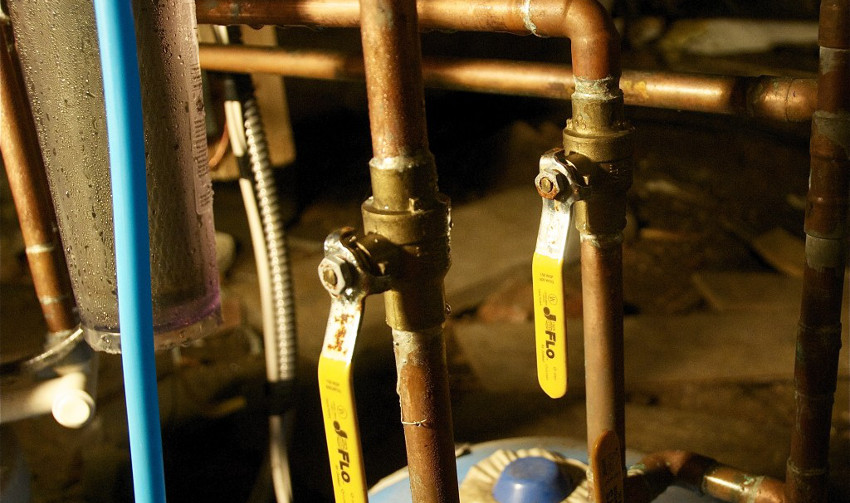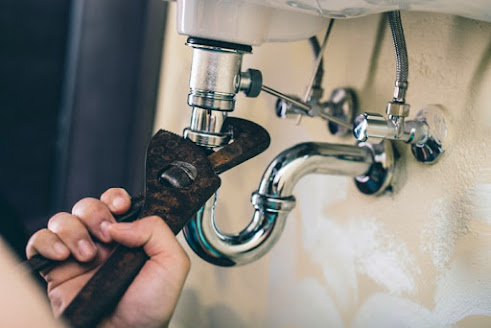Noisy Plumbing Problems Addressed!
Noisy Plumbing Problems Addressed!
Blog Article
They are making several great points relating to Why is My Home Making Strange Plumbing Noises in general in this great article beneath.

To detect noisy plumbing, it is important to figure out first whether the unwanted noises occur on the system's inlet side-in other words, when water is transformed on-or on the drain side. Noises on the inlet side have actually varied causes: extreme water stress, used valve as well as tap components, poorly connected pumps or other home appliances, inaccurately placed pipe fasteners, and plumbing runs including way too many tight bends or other limitations. Sounds on the drainpipe side generally originate from poor location or, just like some inlet side noise, a design having limited bends.
Hissing
Hissing sound that occurs when a faucet is opened slightly typically signals extreme water pressure. Consult your local water company if you suspect this problem; it will have the ability to tell you the water pressure in your area and can install a pressurereducing valve on the incoming water supply pipe if required.
Other Inlet Side Noises
Creaking, squeaking, scratching, snapping, and tapping usually are caused by the development or tightening of pipelines, normally copper ones supplying hot water. The noises take place as the pipelines slide versus loosened fasteners or strike close-by house framing. You can often determine the area of the issue if the pipes are subjected; just follow the audio when the pipelines are making sounds. Probably you will uncover a loosened pipe hanger or an area where pipelines exist so close to flooring joists or various other mounting items that they clatter versus them. Connecting foam pipe insulation around the pipes at the point of call must correct the issue. Be sure bands and also hangers are protected and give adequate assistance. Where feasible, pipe bolts need to be affixed to huge architectural components such as structure walls instead of to framing; doing so lessens the transmission of resonances from plumbing to surface areas that can magnify as well as transfer them. If attaching bolts to framework is inevitable, wrap pipelines with insulation or various other resistant product where they call fasteners, and sandwich the ends of new fasteners between rubber washing machines when mounting them.
Fixing plumbing runs that struggle with flow-restricting limited or many bends is a last option that should be taken on just after speaking with an experienced plumbing contractor. Regrettably, this situation is rather typical in older houses that might not have actually been developed with interior plumbing or that have seen numerous remodels, especially by beginners.
Babbling or Screeching
Extreme chattering or screeching that happens when a shutoff or faucet is activated, and that normally disappears when the fitting is opened totally, signals loose or malfunctioning internal parts. The remedy is to replace the shutoff or faucet with a brand-new one.
Pumps and home appliances such as cleaning devices and also dishwashers can move motor sound to pipelines if they are improperly linked. Connect such items to plumbing with plastic or rubber hoses-never inflexible pipe-to isolate them.
Drainpipe Sound
On the drainpipe side of plumbing, the chief goals are to remove surface areas that can be struck by falling or rushing water and also to insulate pipelines to contain inevitable audios.
In brand-new construction, tubs, shower stalls, commodes, and wallmounted sinks as well as containers need to be set on or against durable underlayments to minimize the transmission of audio through them. Water-saving toilets as well as taps are much less loud than conventional models; install them rather than older kinds even if codes in your location still allow using older fixtures.
Drainpipes that do not run up and down to the cellar or that branch right into straight pipeline runs sustained at flooring joists or various other mounting present particularly problematic noise issues. Such pipelines are big sufficient to emit substantial resonance; they also carry significant amounts of water, which makes the scenario even worse. In brand-new building and construction, define cast-iron dirt pipelines (the big pipelines that drain pipes bathrooms) if you can manage them. Their enormity consists of a lot of the sound made by water passing through them. Also, avoid routing drainpipes in walls shared with bedrooms and rooms where individuals collect. Walls including drainpipes should be soundproofed as was described earlier, making use of dual panels of sound-insulating fiberboard and wallboard. Pipes themselves can be wrapped with unique fiberglass insulation created the objective; such pipelines have an invulnerable vinyl skin (sometimes containing lead). Outcomes are not constantly adequate.
Thudding
Thudding sound, typically accompanied by trembling pipes, when a tap or device valve is turned off is a problem called water hammer. The noise and also resonance are caused by the reverberating wave of stress in the water, which unexpectedly has no place to go. Sometimes opening up a valve that releases water rapidly into a section of piping consisting of a restriction, arm joint, or tee fitting can generate the exact same problem.
Water hammer can normally be cured by setting up fittings called air chambers or shock absorbers in the plumbing to which the trouble shutoffs or faucets are attached. These devices permit the shock wave produced by the halted flow of water to dissipate in the air they contain, which (unlike water) is compressible.
Older plumbing systems might have brief vertical areas of capped pipe behind wall surfaces on tap competes the exact same purpose; these can ultimately loaded with water, decreasing or damaging their effectiveness. The treatment is to drain the water supply entirely by shutting off the primary water valve as well as opening up all taps. After that open the primary supply shutoff as well as close the faucets individually, beginning with the faucet nearest the shutoff as well as ending with the one farthest away.
WHY IS MY PLUMBING MAKING SO MUCH NOISE?
This noise indeed sounds like someone is banging a hammer against your pipes! It happens when a faucet is opened, allowed to run for a bit, then quickly shut — causing the rushing water to slam against the shut-off valve.
To remedy this, you’ll need to check and refill your air chamber. Air chambers are filled with — you guessed it — air and help absorb the shock of moving water (that comes to a sudden stop). Over time, these chambers can fill with water, making them less effective.
You’ll want to turn off your home’s water supply, then open ALL faucets (from the bathroom sink to outdoor hose bib) to drain your pipes. Then, turn the water back on and hopefully the noise stops! If you’re still hearing the sound, give us a call to examine further.
Whistles
Whistling sounds can be frustrating, as sometimes the source isn’t easily identified. However, if you can pinpoint which faucet or valve that may be the cause, you’ll likely encounter a worn gasket or washer — an easy fix if you replace the worn parts!Whistling sounds from elsewhere can mean a number of things — from high water pressure to mineral deposits. Your best plan of attack here is to give our plumbing experts a call. We’ll be able to determine where the noise is coming from and what the cause may be, then recommend an effective fix!
Cracks or Ticks
Cracking or ticking typically comes from hot water going through cold, copper pipes. This causes the copper to expand resulting in a cracking or ticking sound. Once the pipes stop expanding, the noise should stop as well.
Pro tip: you may want to lower the temperature of your water heater to see if that helps lessen the sound, or wrapping the pipe in insulation can also help muffle the noise.
Bangs
Bangs typically come from water pressure that’s too high. To test for high water pressure, get a pressure gauge and attach it to your faucet. Water pressure should be no higher than 80 psi (pounds per square inch) and also no lower than 40 psi. If you find a number greater than 80 psi, then you’ve found your problem!
Next step is to give us a call in order to install a pressure regulator. Trust us, you don’t want to wait to resolve this issue. Not only is the sound annoying, but high water pressure can be destructive to your home — including damaging certain appliances, like your washer and dishwasher.
Dripping
You might be accustom to the slow quiet drip your kitchen faucet makes. You might have even tuned out your bathroom sink dripping and drabbing all day long — but it’s time to find its cause.
A slow drip could signify a variety of easy to fix issues, such as a worn out O ring, or loose part. And by ignoring the drip, you could be wasting up to 2,000 gallons of water a year! So start conserving water — get it looked at ASAP.
https://www.pwessig.com/blog/2018/december/why-is-my-plumbing-making-so-much-noise-/

We were made aware of that article on Why Do My Plumbing Pipes Make A Knocking Noise from someone on a different domain. If you liked our blog posting kindly be sure to pass it around. Thanks for your time. Please come by our site back soon.
Click Here To Find Out More Report this page